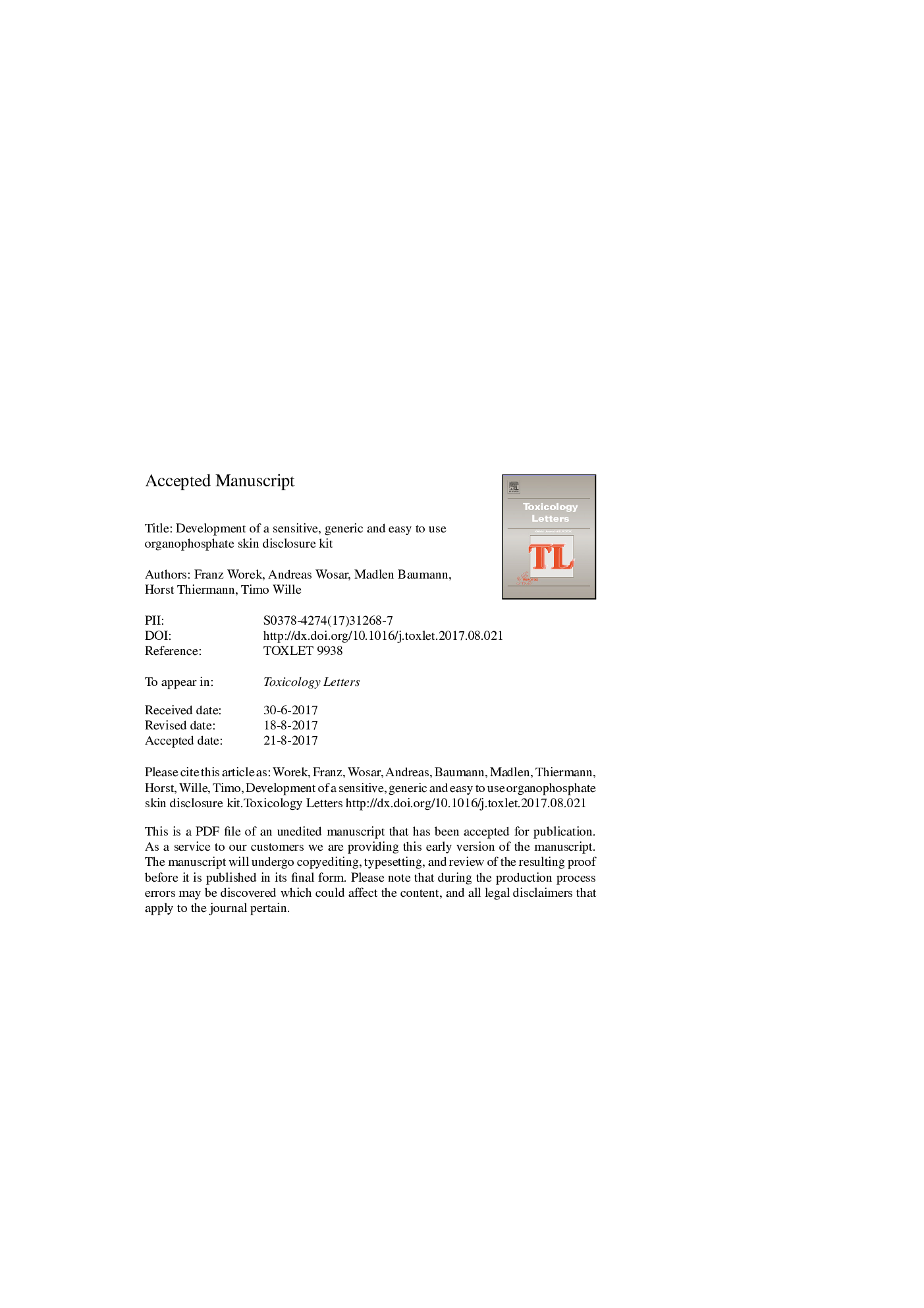| Article ID | Journal | Published Year | Pages | File Type |
|---|---|---|---|---|
| 5562036 | Toxicology Letters | 2017 | 26 Pages |
Abstract
Various organophosphorus compounds (OP), primarily the nerve agent VX and other V-agents, are highly toxic to humans after skin exposure. Percutaneous exposure by such OP results in a delayed onset of toxic signs which enables the initiation of specific countermeasures if contamination is detected rapidly. Presently available mobile detection systems can hardly detect skin exposure by low volatile OP. In order to fill this gap an OP skin disclosure kit was developed which should fulfill different requirements, i.e. a high sensitivity, coverage of human toxic OP, easy handling, rapid results, small dimension and weight. The kit includes a cotton swab to sample skin, human AChE as target and chemicals for a color reaction based on the Ellman assay which is recorded by visual inspection. OP is dissolved from the sampler in a test tube filled with phosphate buffer (0.1 M, pH 7.4) and incubated with lyophilized human AChE for 1 min. The reaction with acetylthiocholine and 5,5â²-dithio-bis-2-nitrobenzoic acid (1 min) results in a rich yellow color in the absence of OP and in contrast, in transparent or pale yellow buffer in the presence of OP. At the recommended conditions, the limit of detection is 100 ng VX and Russian VX and 50 ng Chinese VX on plain surface and 200 ng VX on rat skin. With activated pesticides, paraoxon and malaoxon, a concentration of â¼10 μg can be detected on plain surface. The ready-to-use kit has a weight of 16 g and a size of 10 Ã 12 Ã 1 cm. In the end, this kit has the potential to fill a major gap and to enable timely detection of OP skin exposure and initiation of life-saving countermeasures.
Related Topics
Life Sciences
Environmental Science
Health, Toxicology and Mutagenesis
Authors
Franz Worek, Andreas Wosar, Madlen Baumann, Horst Thiermann, Timo Wille,
